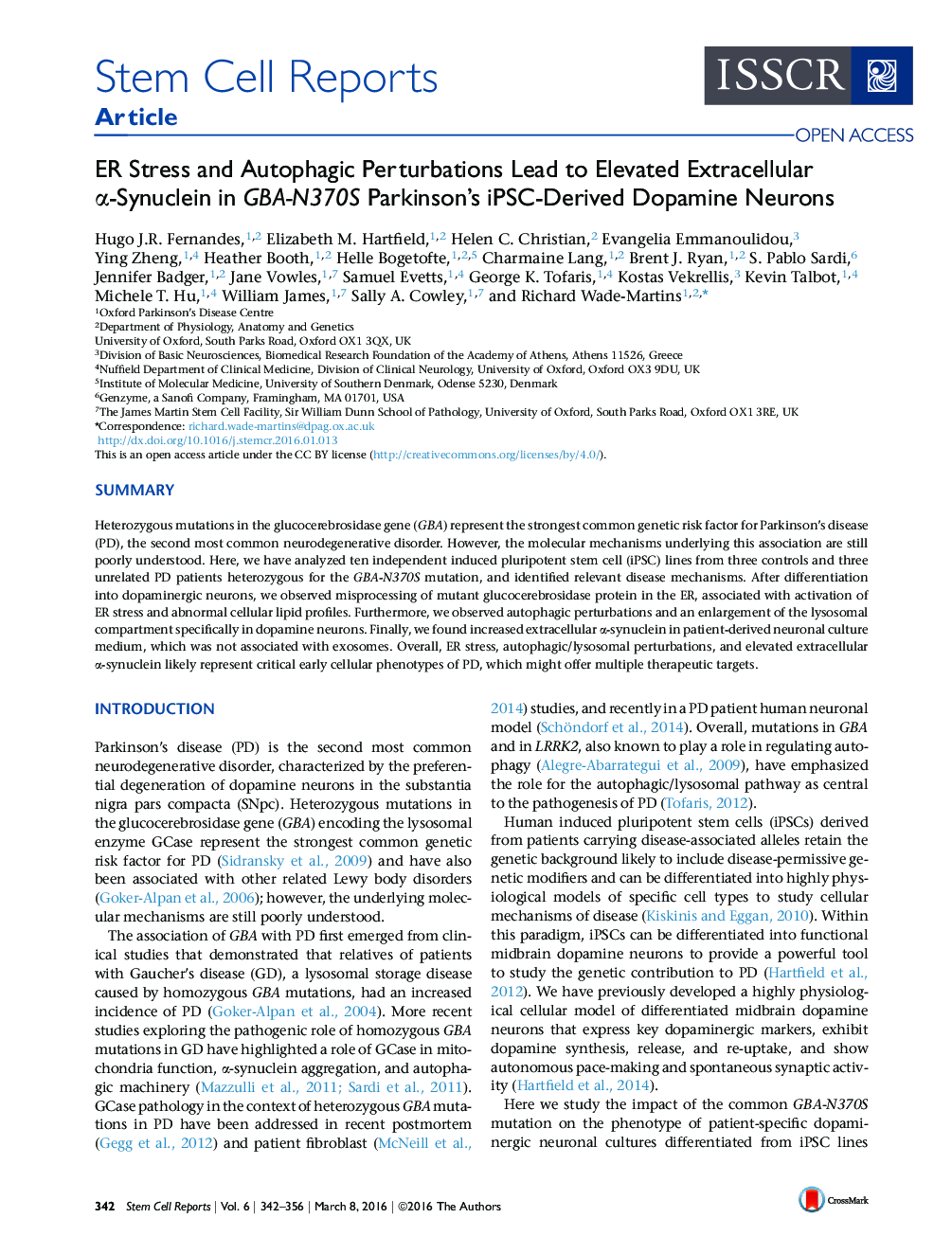| کد مقاله | کد نشریه | سال انتشار | مقاله انگلیسی | نسخه تمام متن |
|---|---|---|---|---|
| 2093309 | 1081952 | 2016 | 15 صفحه PDF | دانلود رایگان |

• Functional analysis of dopamine neurons from 5 PD GBA-N370S and 5 control iPSC lines
• Perturbed lipid profiles, ER stress, and autophagy in iPSC PD-N370S dopamine neurons
• Enlarged and impaired lysosomal compartment in iPSC PD-N370S dopamine neurons
• Increased extracellular α-synuclein in iPSC PD-N370S dopamine neuronal cultures
SummaryHeterozygous mutations in the glucocerebrosidase gene (GBA) represent the strongest common genetic risk factor for Parkinson's disease (PD), the second most common neurodegenerative disorder. However, the molecular mechanisms underlying this association are still poorly understood. Here, we have analyzed ten independent induced pluripotent stem cell (iPSC) lines from three controls and three unrelated PD patients heterozygous for the GBA-N370S mutation, and identified relevant disease mechanisms. After differentiation into dopaminergic neurons, we observed misprocessing of mutant glucocerebrosidase protein in the ER, associated with activation of ER stress and abnormal cellular lipid profiles. Furthermore, we observed autophagic perturbations and an enlargement of the lysosomal compartment specifically in dopamine neurons. Finally, we found increased extracellular α-synuclein in patient-derived neuronal culture medium, which was not associated with exosomes. Overall, ER stress, autophagic/lysosomal perturbations, and elevated extracellular α-synuclein likely represent critical early cellular phenotypes of PD, which might offer multiple therapeutic targets.
Graphical AbstractFigure optionsDownload as PowerPoint slide
Journal: - Volume 6, Issue 3, 8 March 2016, Pages 342–356